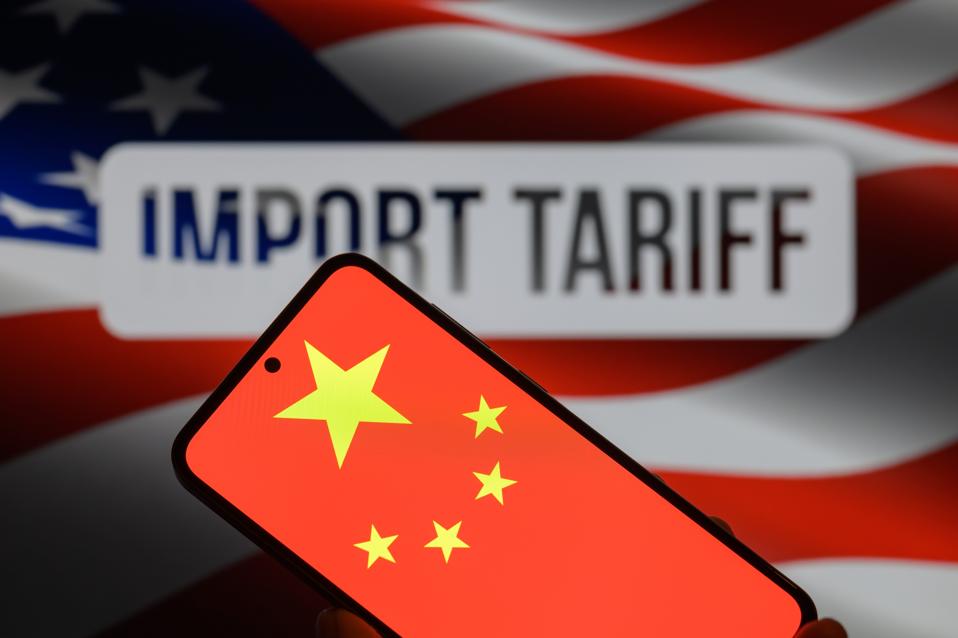Wall Street and Shanghai markets may have cheered the U.S.-China tariff détente, but beneath the surface optimism lies a profound strategic recalibration of the world’s most consequential technological rivalry.
The May 12 agreement, a 90-day suspension of escalating tariffs, has seen U.S. duties on Chinese imports plummet dramatically from an aggressive 145% down to a more moderate 30%, while China reciprocated with tariffs on American goods reduced from 125% to 10%. This temporary peace, however, signals not an end to hostilities but a new phase defined by careful maneuvering and intense strategic rivalry, aptly termed “competitive coexistence.”
Markets Show Resilience Amid Geopolitical Shifts
Influential Chinese commentator Ren Yi, widely known as Chairman Rabbit, encapsulated Beijing’s view by describing the tariff truce as a “beautiful counterattack.” In a widely circulated WeChat post, Ren portrayed the agreement as a pragmatic victory against the Trump administration’s “impulsive paper-tiger tactics,” underscoring China’s long-term strategic acumen and disciplined approach in contrast to America’s more reactive stance. His narrative resonated deeply with domestic Chinese audiences, reflecting Beijing’s confidence in its strategic positioning amidst ongoing geopolitical tensions.
Yet, beyond political narratives, global financial markets have demonstrated notable resilience. After the initial tariff announcement on April 9 triggered widespread anxiety, markets had already begun to recalibrate expectations by the time the truce was officially announced. From April 9 to May 12, technology stocks notably benefited from investor confidence in the resilience and adaptability of major firms. Alibaba led the charge with a remarkable 25.5% rise in its share price, followed closely by Tencent with a 17.3% increase and Baidu’s 13.3% gain. U.S. tech giants also shared in the relief rally: Meta’s shares surged by 9.2% and Apple’s by 6%, although Alphabet’s stock experienced a modest decline, reflecting lingering investor concerns about its international regulatory exposure and vulnerabilities in key global markets.
This market adjustment represents more than mere optimism—it highlights a deeper shift in investor psychology. Geopolitical tensions are no longer seen as isolated threats but strategic inflection points demanding corporate agility and adaptability. Investors increasingly expect firms to navigate geopolitical uncertainties effectively, turning potential disruptions into opportunities for strategic recalibration.
AI Dominance and the Tech Ecosystem Divide
Central to this recalibration is the intense race for artificial intelligence dominance. American companies like Meta and Microsoft are vigorously expanding AI capabilities through advanced cloud services, partnerships, and product innovations. Meta’s strong growth reflects increasing demand for its AI-powered ad tools and content creation services, which have significantly enhanced user targeting and engagement. Microsoft, meanwhile, continues to integrate OpenAI’s cutting-edge technologies into its Azure cloud platform, seeking to set global standards in enterprise AI solutions.
Chinese tech giants are equally aggressive, accelerating development of self-contained AI ecosystems in response to tightening U.S. restrictions, including export controls on advanced AI chips and critical technologies. Tencent, for instance, reported robust financial results in Q1 2025, with revenues climbing 13% year-on-year to RMB 180 billion ($25.1 billion). This growth was fueled primarily by its Value-Added Services segment, including blockbuster games such as Honour of Kings and Delta Force, as well as AI-driven marketing enhancements on platforms like Weixin Search. Despite substantial investments in AI, Tencent managed an 18% rise in operating profits to RMB 69.3 billion ($9.7 billion), underlining its capacity to balance strategic investments with profitability.
Meanwhile, China’s strategic pivot toward domestic technological innovation has been particularly evident in AI infrastructure development. Initiatives like Baidu’s PaddlePaddle and Alibaba’s ModelScope illustrate a determined push to build sovereign technological stacks capable of competing independently of foreign technologies. The broader geopolitical context, especially U.S. export controls and the rescinding of the Biden-era AI Diffusion Rule—replaced with targeted restrictions—has galvanized China’s resolve to innovate autonomously.
Navigating New Realities: Supply Chains, Talent, and Investment
The strategic realignment also underscores broader shifts in global supply chains, with U.S. companies actively diversifying manufacturing and production away from China to hedge against future geopolitical shocks. Apple epitomizes this approach through its accelerated expansion in alternative manufacturing hubs like India and Vietnam—a strategy known as “China+1.” However, despite these tactical shifts, China’s entrenched role in global manufacturing, bolstered by its extensive supplier networks, skilled workforce, and manufacturing efficiencies, renders complete decoupling unrealistic and economically disruptive.
Capital and talent flows have similarly been reshaped by geopolitical tensions. Chinese firms now face increasing obstacles when attempting to access foreign investment or public markets. Heightened scrutiny of researchers’ visas and the politicization of academic collaborations have further complicated talent acquisition. Nevertheless, both China and the U.S. continue to significantly ramp up domestic investments. The U.S. CHIPS and Science Act channels substantial federal funds into semiconductor and AI research, aiming to safeguard technological leadership. China mirrors these efforts with extensive initiatives bolstering technology zones, intensifying public-private partnerships, and prioritizing STEM education nationwide.
The resulting environment is one of strategic caution combined with sustained competitive aggression—a delicate equilibrium captured by the term “competitive coexistence.” Companies must adeptly navigate a dual reality of collaboration and competition, reflecting a fragmented yet interconnected global technology landscape.
In this new paradigm, the defining contest between the U.S. and China transcends tariff skirmishes. Instead, the battlefield extends to innovation, scalability, and influence over international technological standards. This truce thus provides not only temporary economic relief but also a moment of clarity, spotlighting the relentless drive of both superpowers toward long-term technological supremacy. The markets, now more accustomed to such dynamics, perceive geopolitical frictions as persistent realities that demand continuous strategic foresight and adaptability.

